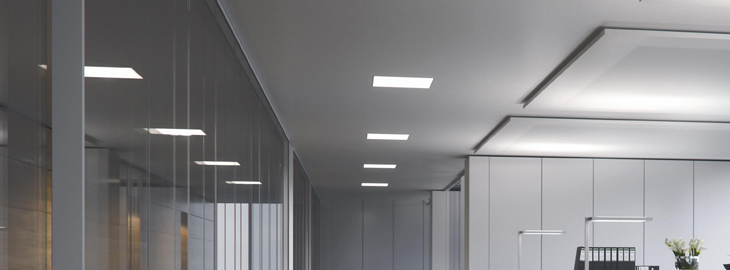An Architect's Guide To: Surface Mounted Lights

Surface-mounted lighting has emerged as a favored luminary choice within contemporary architectural space. Prized for its versatility, straightforward installation, and diverse illumination offerings, it presents a spectrum of lighting possibilities for a myriad of spaces. Notably, it stands as a tool for cultivating ambiance and amplifying the intrinsic aesthetic allure of an environment.
In this article, it will encompass:
- Types of Surface-Mounted Lights
- Benefits of Surface-Mounted Lights
- Incorporating Surface-Mounted Lights Into Architectural Designs.
Types of Surface-Mounted Lights
In the realm of surface-mounted lighting, a diverse array of luminaires awaits, each possessing distinctive attributes and advantages. Here, we delve into some of the prominent forms of surface-mounted lighting:
- Ceiling-Mounted Fixtures: These luminaires are directly affixed to the ceiling, serving as primary sources of ambient illumination. They come in various shapes and sizes – circular, square, and rectangular – offering a versatile canvas for architectural lighting.
- Wall-Mounted Luminaires: These fixtures grace vertical surfaces, providing task illumination or highlighting architectural elements. They can be adjusted to specific angles, excelling in precise lighting applications.
- Pendant Lights: Gracefully suspended from above by cords or chains, pendant lights combine elegance with functionality. Available in diverse shapes and sizes, they excel in task lighting or accentuating design features.
- Track Lighting: This innovative system orchestrates luminaires along ceiling tracks, enabling controlled directional lighting. Its versatility is well-suited for crafting focused lighting arrangements.
- Recessed Luminaires: Seamlessly integrated into ceiling planes, recessed luminaires emanate understated sophistication, casting a gentle, diffuse radiance. A hallmark of contemporary aesthetics, they seamlessly harmonize with minimalist design schemes.
Benefits of Surface-Mounted Lights
Embracing surface-mounted luminance in architectural compositions brings forth a host of advantageous attributes. The following outlines some of the notable benefits:
Versatility: Surface-mounted luminaires serve as versatile tools, wielded to achieve diverse lighting effects. Whether illuminating specific focal points, fostering ambiance, or facilitating task-oriented brightness, they lend themselves to a plethora of lighting scenarios.
Simplified Installation: The installation of surface-mounted lighting solutions is characterized by its straightforwardness, demanding minimal wiring intricacies. As such, it stands as a favored choice for both new construction ventures and renovation projects.
Energy Efficiency: Noteworthy among surface-mounted luminaires is their propensity for energy efficiency, a factor that contributes to reduced operational costs and a heightened commitment to sustainable practices.
Aesthetic Enhancement: Surface-mounted luminaires emerge as aesthetic enhancers, their design diversity in shapes, sizes, and finishes enabling seamless integration with existing design motifs. The result is an elevated aesthetic appeal that complements and elevates the overall spatial composition.
Incorporating Surface-Mounted Lighting into Your Architectural Designs
When integrating surface-mounted lighting into your architectural designs, remember to consider the following factors:
- Purpose: Determine the intended function of the lighting – whether it’s for general illumination, focused tasks, or subtle accents.
- Location: Decide where the lighting will be placed – whether on the ceiling, walls, or suspended from above.
- Style: Choose a lighting style that complements your design, taking into account the fixture’s shape, size, and finish.
- Quantity: Assess how many fixtures are necessary to achieve the desired lighting effect.
- Wiring: Plan the wiring and control setup, including whether dimmer switches or control systems will be employed.
By keeping these factors in mind, you can select the appropriate surface-mounted lighting options that align with your architectural vision and achieve the desired lighting outcomes.
In Summary
Surface-mounted lighting offers versatility, simple installation, and visual charm, elevating any space’s design. By grasping its various types, advantages, and integration techniques, you can devise an illuminating strategy that aligns with your architectural vision and client requirements.


